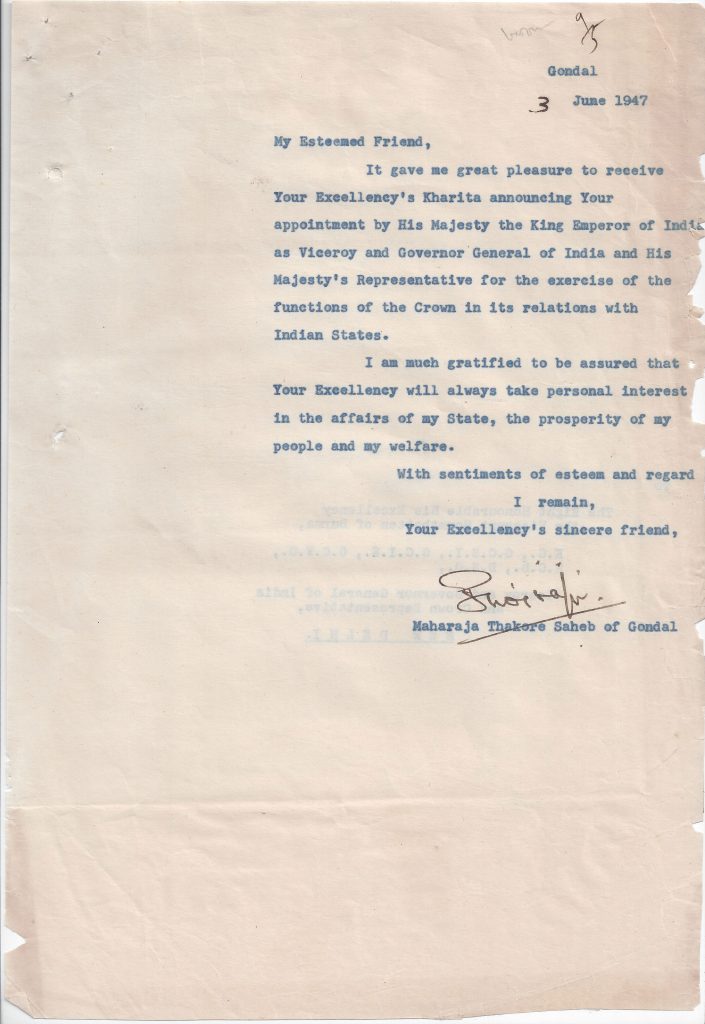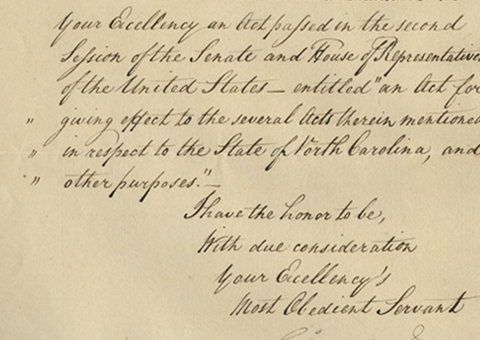Lord Louis Mountbatten Officially Announces His Appointment as the Final English Viceroy in India, Sent by George VI to Transition India to Independence


Mountbatten, writing to the Maharajas, was charged with achieving Indian independence and British withdrawal, which he did in a matter of months after taking office in 1947
The Maharajas led the Indian princely states, and would have the power to say whether they would join India or not; An important piece of Indian history
After decades of agitation for Indian independence, led by Gandhi, Nehru and others, the British determination to hold India was flagging by the late 1930s....
The Maharajas led the Indian princely states, and would have the power to say whether they would join India or not; An important piece of Indian history
After decades of agitation for Indian independence, led by Gandhi, Nehru and others, the British determination to hold India was flagging by the late 1930s. Then came World War II, and Britain itself barely survived, coming out of the war with reduced power and experiencing shortages and hardships at home to a significant degree. The taste to spend resources and energy fighting against Indian independence collapsed. And while the leader of the Conservatives, Winston Churchill, was a prime advocate of holding onto India, he was out of power. The Labour Party, in power and led by Prime Minister Clement Attlee, was determined to put the subject to rest once and for all.
Lord Louis Mountbatten served as Chief Allied Commander in the Southeast Asia Theater in World War II. Having experience in the region, perceived Labour sympathies at that time, and his being the great-grandson of Queen Victoria (giving him impeccable royal credentials), led Attlee to advise King George VI to appoint Mountbatten Viceroy of India on February 20, 1947, charged with overseeing the transition of British India to independence no later than June 30, 1948. Mountbatten’s instructions were to preserve a united India as a result of the transference of power, but authorized him to adapt to a changing situation in order to get Britain out promptly with minimal reputational and financial damage.
Mountbatten was reluctant to accept the position, because he had no political experience, and he knew it would be a thankless task. But he felt it was his duty.
The Mountbattens arrived in India on March 22, 1947, to an atmosphere of distrust and conflict. Nehru, Gandhi and the Indian National Congress wanted a united, secular India, while the Muslim League, led by Mohammad Ali Jinnah, was pressing for the division of India to create a separate Muslim state: Pakistan. There were violent clashes between Hindus and Muslims in the Punjab on March 15, a harbinger of the future. On March 24, Mountbatten was sworn in as the last British Viceroy of India, his acceptance speech asserting that “a solution must be reached within the next few months.”
Soon after his speech, Mountbatten officially notified the maharajas of India, rulers of the princely states, that he had taken office as Viceroy. This was a monumental moment in Indian history. This is one of those historic notifications: A partly printed, partly typed letter signed, on his gold embossed Viceroy’s letterhead, New Delhi, India, April 19, 1947, to His Highness Maharaja Shree Bhojrajji, Maharajah of Gondal, a state in the province of Gujarat. “I write to inform Your Highness that having been appointed by His Most Gracious Majesty the King, Emperor of India, to be Viceroy and Governor General of India and His Majesty’s Representative for the exercise of the functions of the Crown in its relations with Indian States in succession to Field Marshal the Right Honorable the Viscount Wavell, I assumed charge of my office at New Delhi on March 23, 1947. Your Highness may rest assured that the affairs of your State will always command my personal interest. With earnest wishes for your welfare and the prosperity of your people, I remain, with much consideration, your Highness’ sincere friend.” It is signed Mountbatten of Burma.
Included is the reply of Maharaja. Typed letter signed, Gondal, June 3, 1947, to Mountbatten. “My esteemed friend, it gave me great pleasure to receive Your Excellency’s Kharita announcing your appointment as Viceroy and Governor General of India and His Majesty’s Representative for the exercise of the functions of the crown and its relations with the Indian States. I am gratified to be assured that Your Excellency will always take personal interest in the affairs of my State, the prosperity of my people, and my welfare.” He signed with his title, Thakore Saheb of Gondal.
Mountbatten’s hopes of overseeing a peaceful transition to an independent, united India were dashed as communal violence intensified between Muslim and Hindu communities. Although his advisers favored a gradual transfer of independence, but Mountbatten concluded, much against his desire, that a single state solution would cause chaos, and was impractical. Hoping to force a compromise and to end the violence, Mountbatten decided to accelerate independence to the summer of 1947, and he eventually agreed, with much reluctance, to India’s partition and the creation of Pakistan.
The Indian Independence Act was based upon the Mountbatten plan of June 3, 1947 and was passed by the British parliament on July 5. It received royal assent on July 18. It provided for two dominion states : India and Pakistan. The authority of the British Crown over the princely states ceased and they were free to join either India or Pakistan or remain independent. Both the dominions of India and Pakistan were to have Governor Generals to be appointed by the British King. The act also provided for a common Governor general if both of them agreed. The constituent assemblies of both the states were free to make constitutions of their respective countries. The British Government would not continue any control on any dominion. The Governor General was invested with adequate powers until March 1948 to issue orders for effective implementation of the provisions of the Indian Independence Act. Jinnah left for Karachi on August 7, 1947, and there the Constituent assembly of Pakistan met on August 11, 1947 and elected him the President. Three days later he was sworn in as Governor General of Pakistan. On the midnight of August 14 and 15 August 1947, British India was dissolved, and India and Pakistan came into existence. The Constituent assembly then appointed Lord Mountbatten as the First Governor General of the Indian Dominion. In the Morning of August 15, 1947, a new cabinet headed by Jawaharlal Nehru was sworn in. The last ruler of Gondal State, Maharaja Shree Bhojrajji, signed the instrument of accession to the Indian Union on February 15, 1948.
Hindu – Muslim riots broke out along both the western and eastern borders in the wake of independence, and a mass transfer of refugees took place from India to Pakistan and vice versa. About 14 million people are thought to have abandoned their homes in the summer and fall of 1947. Estimates of the number of people killed in those months range in the hundreds of thousands or more. India and Pakistan remain foes to this day.

Frame, Display, Preserve
Each frame is custom constructed, using only proper museum archival materials. This includes:The finest frames, tailored to match the document you have chosen. These can period style, antiqued, gilded, wood, etc. Fabric mats, including silk and satin, as well as museum mat board with hand painted bevels. Attachment of the document to the matting to ensure its protection. This "hinging" is done according to archival standards. Protective "glass," or Tru Vue Optium Acrylic glazing, which is shatter resistant, 99% UV protective, and anti-reflective. You benefit from our decades of experience in designing and creating beautiful, compelling, and protective framed historical documents.
Learn more about our Framing Services









































































































